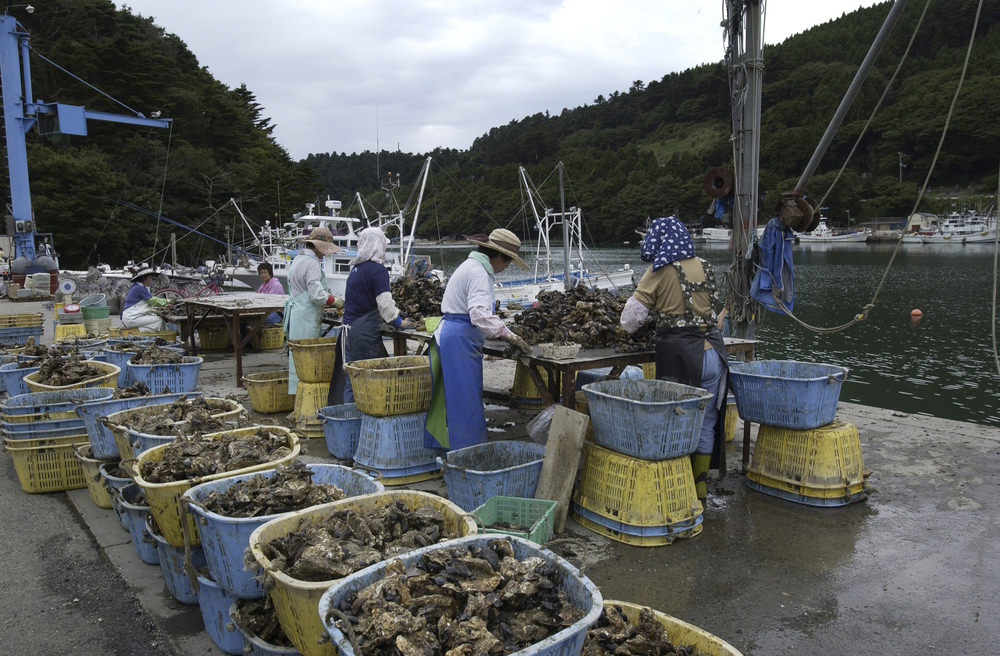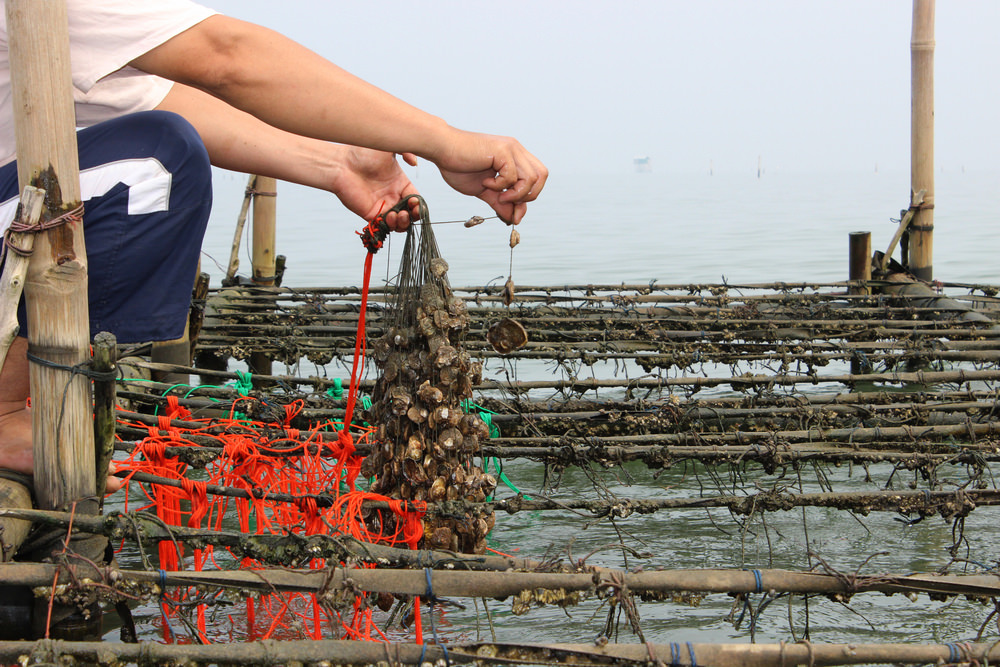Freshwater cultured pearls have become a cornerstone of the pearl industry, representing nearly 100% of the total pearls sold worldwide. The process of cultivating these pearls is a delicate and rewarding journey that takes place on pearl farms. In this comprehensive guide, we will delve deep into the meticulous world of freshwater cultured pearls, exploring the pearl farming process, modern methods, oyster nucleation, grafting techniques, and the intricate process of pearl harvesting.
Freshwater cultured pearls are grown on pearl farms. Thousands of oysters are nucleated and then taken well care of during the 2-5 years needed for a pearl to mature. A whole bed of oysters can be entirely destroyed by uncontrollable and unpredictable factors, such as:
So, to optimize the gains, freshwater pearl farming is carried out during the autumn and spring months. That’s when the water temperatures and other external environmental conditions, like the weather, are calm. Freshwater pearls thrive in stable, peaceful and calm conditions.
Freshwater cultured pearls are meticulously grown on pearl farms, where thousands of oysters are carefully nurtured over a span of 2 to 5 years. This nurturing process is both a labor of love and a test of patience. However, the rewards are well worth the effort, as these pearls are highly sought after in the global market.
Pearl farming is not without its challenges. Uncontrollable and unpredictable factors, such as disease, water pollution, intense storms, temperature extremes, and unforeseen circumstances, can lead to the complete destruction of an entire bed of oysters. To optimize the chances of success, freshwater pearl farming is strategically conducted during the autumn and spring months. During these periods, the water temperatures and external environmental conditions, including weather patterns, are relatively calm. Freshwater pearls thrive in stable, peaceful, and serene conditions.

Modern pearl farming begins with the essential step of obtaining oysters for nucleation. An increasingly popular practice is breeding your own oysters. This process involves collecting oyster eggs and sperm from existing pearl-producing oysters on the farm. The collected sperm is used to fertilize the eggs, giving rise to a new generation of oyster larvae.
The oyster larvae are then allowed to float freely in the water, under controlled conditions, until they reach a few weeks in age. Over the course of several months, these larvae undergo a remarkable transformation, developing into small baby oysters. These young oysters are then transferred to a separate nursery region within the pearl farm, where they are nurtured for approximately 1-2 years. During this period, they grow large enough to undergo nucleation.

Oyster nucleation is a surgical procedure in which a foreign object is carefully implanted into the oyster. This foreign object triggers irritation within the oyster, prompting it to secrete nacre, a unique substance that covers the object and gradually forms the pearl. The nucleation process typically occurs within about two years, marking the beginning of the pearl’s formation.
When grafting a freshwater mussel, a piece of mantle tissue is skillfully placed inside an incision in the host mussel’s mantle rather than in the gonad. This innovative technique allows for the production of an impressive average of 24-32 pearls within each culturing cycle.
Following the nucleation process, the oysters are given a few weeks to heal from the surgical procedure. Subsequently, they are carefully placed in nets or cages and transferred to dedicated oyster beds. Here, the pearls will continue to develop under the watchful care of pearl farmers.
The duration of pearl development can vary depending on the type of oyster and the desired pearl characteristics. In some cases, this process may take several additional months, while other pearls may require several years to reach their full potential.
After the pearls have fully matured, which can take up to five years, the time for harvesting arrives. The pearls are delicately removed from the oysters, meticulously washed, dried, and sorted into various categories based on their unique characteristics. These freshwater cultured pearls are then made available to pearl dealers, jewelers, and other manufacturers.
Freshwater cultured pearls are the result of a complex and intricate process that combines art and science. The journey from oyster selection to pearl harvesting is a testament to the dedication and precision of pearl farmers. These serene and stable environments foster the development of pearls that are renowned for their beauty and desirability. As we conclude our exploration, we recognize the enduring allure of freshwater cultured pearls in the world of jewelry and beyond.
Freshwater cultured pearls differ from saltwater pearls in various ways. One of the primary distinctions is the host mollusk: freshwater pearls are cultivated in mussels, while saltwater pearls come from oysters. Additionally, freshwater pearls tend to be more durable and can be nucleated to produce multiple pearls, whereas saltwater pearls are often nucleated with a single bead and tend to be more round in shape.
The quality and value of freshwater cultured pearls are influenced by factors such as size, shape, surface quality, luster, color, and matching. Larger, rounder pearls with high luster, a smooth surface, and vibrant colors are generally considered more valuable. Precise matching of pearls in a strand also contributes to their overall quality.
Caring for freshwater cultured pearl jewelry involves keeping it away from harsh chemicals, perfumes, and cosmetics, as these can damage the pearls’ luster and surface. It’s advisable to wipe the pearls with a soft, damp cloth after wearing them to remove any residue. Storing pearls separately from other jewelry, in a soft pouch or cloth, helps prevent scratches and maintain their luster. It’s also important to restring pearl necklaces periodically to prevent breakage.
Signup now and receive an email once I publish new content.